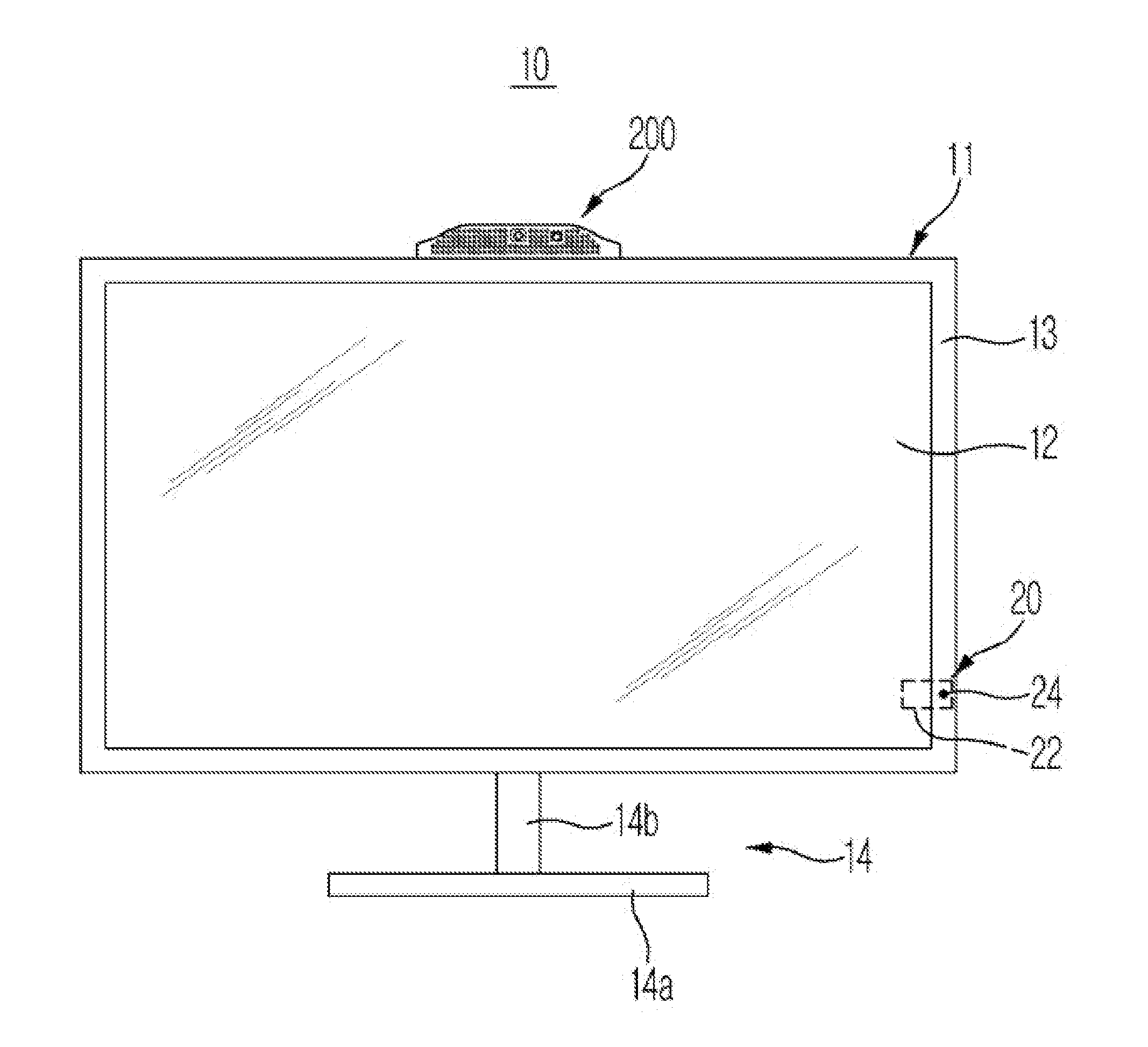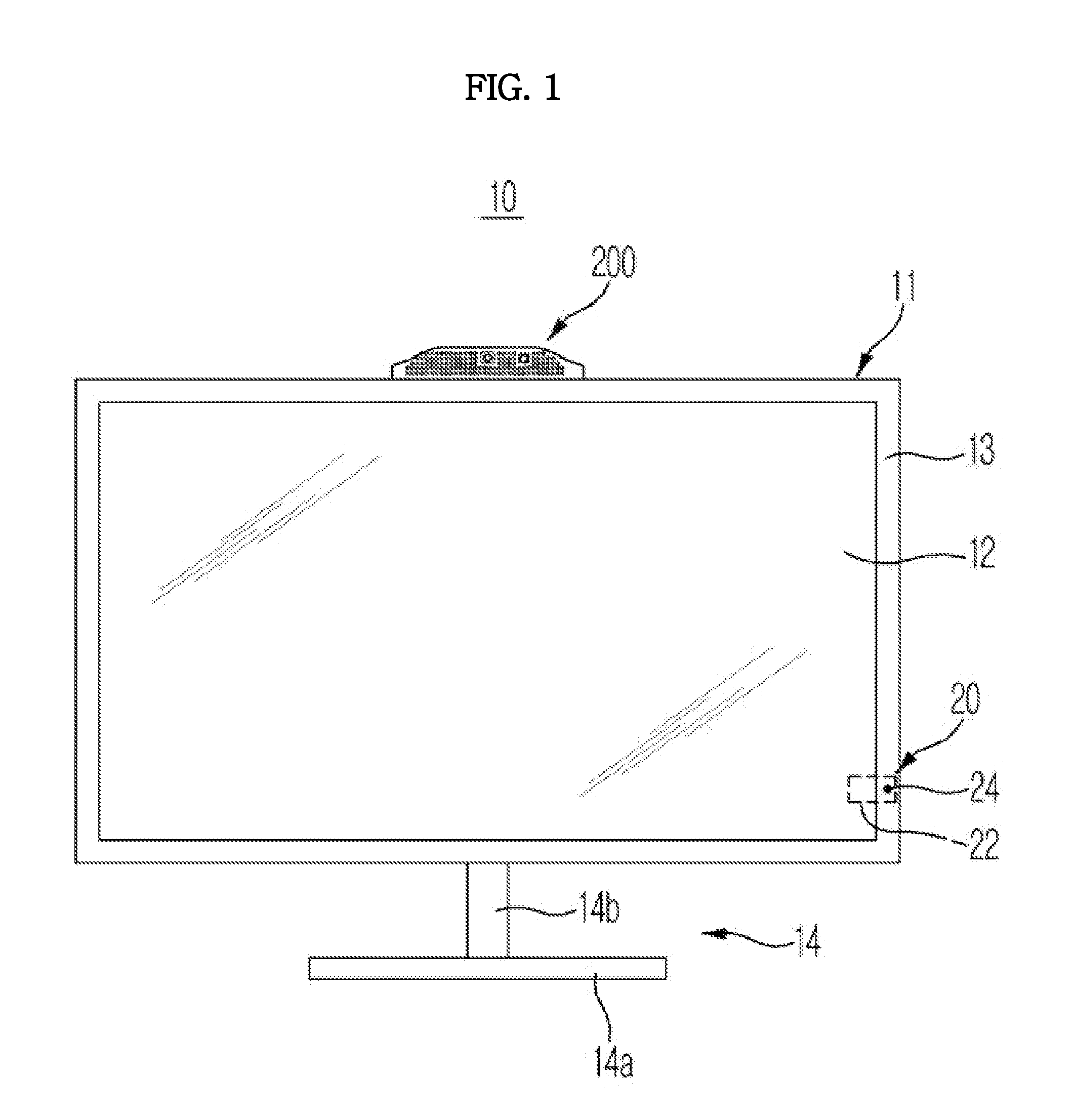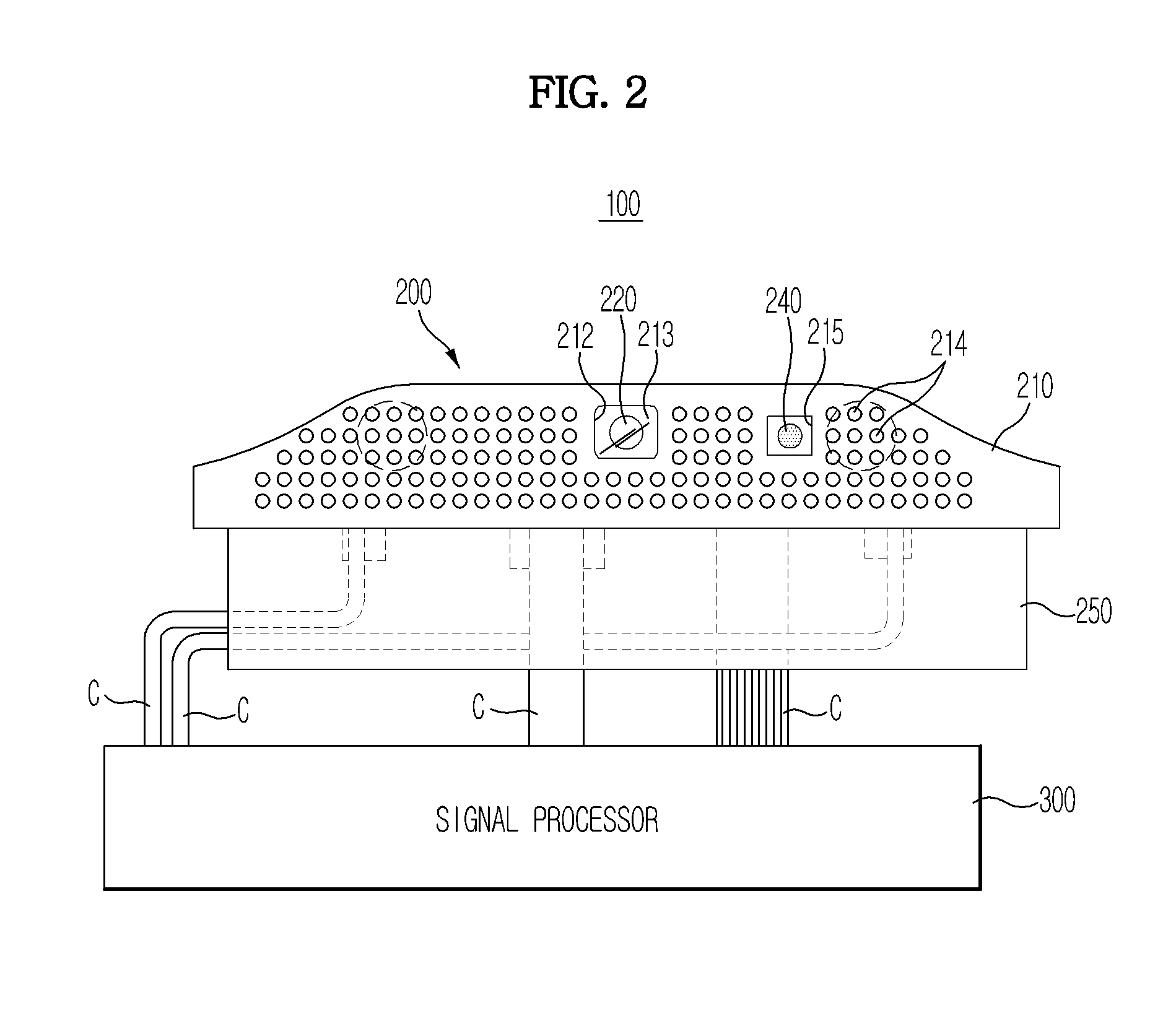Display apparatus
- Summary
- Abstract
- Description
- Claims
- Application Information
AI Technical Summary
Benefits of technology
Problems solved by technology
Method used
Image
Examples
Embodiment Construction
[0085]Reference will now be made in detail to the exemplary embodiments of the present disclosure, examples of which are illustrated in the accompanying drawings, wherein like reference numerals refer to like elements throughout.
[0086]FIG. 1 is a view illustrating the external appearance of a display apparatus in accordance with one exemplary embodiment of the present disclosure. Referring to FIG. 1, a display apparatus 10 in accordance with one exemplary embodiment of the present disclosure includes a body 11 forming the external appearance of the display apparatus 10, a display panel 12 mounted on a front surface of the body 11 to display image information, a bezel 13 disposed at an outer side of a rim of the display panel 12, and a stand 14 which is fixed to the display panel 12 and the bezel 13.
[0087]The display panel 12 is implemented using a thin film transistor liquid crystal display (TFT-LCD) formed by injecting a liquid crystal layer between two glass substrates on which a ...
PUM
 Login to View More
Login to View More Abstract
Description
Claims
Application Information
 Login to View More
Login to View More - R&D
- Intellectual Property
- Life Sciences
- Materials
- Tech Scout
- Unparalleled Data Quality
- Higher Quality Content
- 60% Fewer Hallucinations
Browse by: Latest US Patents, China's latest patents, Technical Efficacy Thesaurus, Application Domain, Technology Topic, Popular Technical Reports.
© 2025 PatSnap. All rights reserved.Legal|Privacy policy|Modern Slavery Act Transparency Statement|Sitemap|About US| Contact US: help@patsnap.com



